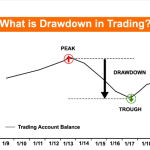
By ATGL
Updated December 24, 2024
Return on Assets (ROA) is a financial metric that provides valuable insight into operational efficiency and management effectiveness. By understanding the nuances of this formula and how it applies across industries, you can make smarter investment decisions and identify high-performing companies.
This article will break down the ROA formula, explain its components, and share practical examples to help you interpret this ratio accurately. You’ll also learn how to use ROA effectively when comparing companies or evaluating investment opportunities.
What Is Return on Assets (ROA) and Why Is It Important?
ROA measures a company’s profitability in relation to its total assets. It evaluates how efficiently management uses available resources — such as cash, inventory, and equipment — to generate earnings. For investors, ROA is essential for understanding how well a company is operating relative to its peers. By comparing the return on assets ratios alongside other financial ratios like profit margin or return on investment, you can develop a comprehensive understanding of a company’s overall efficiency and profitability.
The Value of ROA for Investors
ROA can serve as a powerful starting point for identifying companies with strong operational fundamentals. It highlights whether a business is effectively managing its assets to create value. For example, when comparing companies within the same industry, the one with a higher ROA is generally more efficient at using its resources to generate profits. However, you should look beyond a single ROA figure. A deeper examination of asset composition and profit trends can reveal potential red flags, such as over-reliance on one-time gains or underperforming asset investments.
Formula for Return on Assets and Calculation Examples
The formula for calculating ROA is straightforward:
ROA = Total Assets/Net Income
This calculation involves two components:
- Net Income: The company’s total profit after expenses, taxes, and interest, which is reported on the income statement.
- Total Assets: All resources owned by the company, as shown on the balance sheet.
Understanding the context behind these numbers is key to meaningful ROA analysis. For example, if net income includes significant nonrecurring gains (like selling an asset), the ROA might overstate profitability for that period. Similarly, consider whether asset valuations include recent acquisitions or adjustments, as these can skew results.
Practical Example of ROA Calculation
To illustrate the application of this formula, consider a manufacturing company with the following financial details:
- Net Income: $1,200,000
- Total Assets: $10,000,000
Using the ROA formula:
ROA = 1,200,000 / 10,000,000 = 0.12 or 12%
The company generates $0.12 in profit for every $1 of assets it owns. To delve deeper:
- If total assets increased to $12,000,000 in the next period, but net income remains unchanged at $1,200,000, the ROA would decline to 10%. This drop might indicate that the company has overinvested in assets without generating proportional income.
- On the other hand, if net income rises to $1,500,000 while assets stay at $10,000,000, ROA would improve to 15%, signaling stronger efficiency.
Factors Influencing Return on Assets
ROA doesn’t exist in isolation. Several factors influence its value, and understanding these can help you uncover opportunities and risks that aren’t immediately obvious.
Asset Management Efficiency
Companies with higher ROA ratios typically excel at managing their assets efficiently. This often involves optimizing inventory levels, streamlining production processes, or minimizing unnecessary expenditures. For instance, a retailer that uses predictive analytics to manage its inventory and avoid stockouts might achieve a higher ROA than a competitor burdened with excess stock. Look for patterns in asset turnover ratios and operational data to gauge how well a company is managing its resources.
Revenue Generation Capabilities
Another driver of ROA is a company’s ability to generate revenue from its assets. For example, a hotel chain with a high occupancy rate will likely have a better ROA than one struggling to fill rooms, even if their total assets are comparable. As an investor, consider trends in revenue growth relative to asset growth. If revenue significantly increases while assets remain stable, this often signals strong operational performance.
Interpreting Return on Assets
High vs. Low ROA: What Does It Mean?
A high return on assets ratio is often a sign of strong asset utilization and profitability. Companies with higher ROA demonstrate that they are effectively converting their resources into earnings, which can indicate strong management and operational efficiency. This is particularly valuable when comparing businesses within the same industry, as higher-performing firms often have better cost controls and asset strategies.
Conversely, a low ROA may point to inefficiencies or an overaccumulation of assets that aren’t contributing proportionally to profitability. However, you should analyze this figure alongside other financial ratios, such as profit margin, to understand whether the company is investing for future growth or simply struggling to generate returns.
For example, a company in an asset-heavy industry, like utilities, may report a low ROA compared to a technology firm. In such cases, cross-industry comparisons of return on assets ratios are less meaningful. Instead, focus on how the company’s ROA trends over time and relative to its peers.
ROA in Different Industries
Interpreting ROA requires understanding industry norms, as asset intensity and operating models vary significantly across sectors. In asset-light industries, such as software or consulting, companies often report higher ROAs due to minimal physical investments and reliance on intellectual property. For these businesses, combining ROA with profit margin or return on investment metrics provides additional context for evaluating overall performance.
In contrast, asset-heavy industries, such as manufacturing or real estate, naturally have lower ROAs because of significant investments in equipment, facilities, or property. Here, ROA is best used alongside other financial ratios that account for capital expenditure and operational efficiency. By doing so, you can gain a more comprehensive understanding of how a company is performing within its specific industry.
For example, a construction company may have a lower ROA but still generate strong returns when viewed through the lens of return on investment, reflecting the long-term profitability of its projects.
Practical Use Cases of ROA
Portfolio Evaluation: A Tool for Smarter Investment Choices
ROA is quite valuable when you want to build or refine your portfolio. Companies with consistently high or improving ROA often have competitive advantages, such as strong leadership or proprietary processes, which can translate into sustainable growth. Consider combining ROA with other metrics, like Return on Equity (ROE) or the debt-to-equity ratio, to paint a fuller picture of financial health.
For instance, a company with a high ROA but excessive debt may carry additional risk, while one with moderate ROA and low debt might offer better long-term stability.
Competitive Analysis and Market Positioning
ROA also allows you to benchmark companies within an industry. If one company consistently outperforms its peers in ROA, it likely has operational advantages, such as superior technology or more effective cost controls. However, investigate the reasons behind these results. For example, a company with high ROA driven by asset divestitures may not sustain those returns over time.
Improve Your Investment Portfolio With Above the Green Line
At Above the Green Line, we help investors leverage metrics like Return on Assets to make informed decisions. Our systematic models analyze a variety of financial metrics to identify high-potential securities, removing emotional bias from the equation. By combining technical analysis with actionable insights, we empower you to achieve financial growth and build resilient portfolios.
To continue refining your financial analysis skills, explore our guide on how to calculate stock returns. Join our membership program to access exclusive tools, expert guidance, and a community of like-minded investors.






